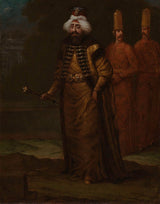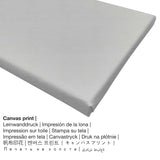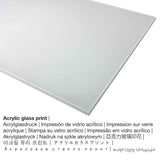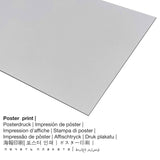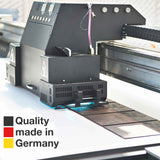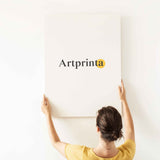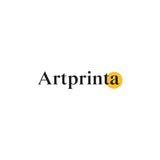Jean Baptiste Vanmour, 1727 - Sultan Ahmed III - ọmarịcha nka
Ụtụ gụnyere. Mbupu gbakọrọ na ndenye ọpụpụ.
Nchịkọta ngwaahịa ebipụta nka ochie
N'elu 290 ihe osise dị afọ e ji esere ya Jean Baptiste Vanmour. Artpiece dị n'ime RijksmuseumNchịkọta nka. Site n'ikike nke: Rijksmuseum (nwere ikike - ngalaba ọha): . Na mgbakwunye na nke ahụ, nhazi ahụ bụ Eserese na a akụkụ ruru nke 3: 4, nke pụtara na ogologo bụ 25% mkpụmkpụ karịa obosara.
Ozi izugbe sitere na webụsaịtị ihe ngosi nka (© nwebiisinka - Rijksmuseum - Rijksmuseum)
Turkish culture blossomed under the rule of Ahmed III. The sultan was fascinated by tulips and organized lavish festivities that lasted as long as the flowers were in bloom. This period, known as the Tulip Era, witnessed many celebrations and was more openly receptive to Western influences. Vanmour saw Ahmed III on various occasions and so was able to give an accurate portrayal of his features.
Tebụl a haziri ahazi nke mpempe nka
| Aha nke ihe nka: | "Sultan Ahmed III" |
| Nhazi: | sere |
| Nhazi nka: | nka ochie |
| Century: | 18th narị afọ |
| Afọ nka: | 1727 |
| Ogologo afọ nka nka: | gbara afọ 290 |
| Ụlọ ihe ngosi nka / ebe: | Rijksmuseum |
| Ebe ngosi nka: | Amsterdam, Netherlands |
| Weebụsaịtị nke ihe ngosi nka: | Rijksmuseum |
| Akwụkwọ ikike nka: | ngalaba ọha |
| Site n'aka: | Rijksmuseum |
Tebụl metadata omenkà
| Aha onye nka: | Jean Baptiste Vanmour |
| Aha utu aha: | Jean Baptiste Vanmour, Vanmour, Van Mour Jean-Baptiste, Van Moor Jean-Baptiste, Jan Baptista van Mour, Vanmour Jean Baptiste, Mour Jean-Baptiste van, Mour Jean Baptiste van, Van Moor Jean Baptiste, Van-Mour, Mour, Van Mour Jean Baptiste, Jean-Baptiste van Mour, J.B. van Moor, Jean Baptiste Van Mour, Vanmour Jean-Baptiste, Moor Jean-Baptiste van |
| okike onye nka: | nwoke |
| Nationality: | French |
| Ọrụ onye na-ese ihe: | onye na-ese ihe |
| Mba onye si: | France |
| Nhazi nke onye nka: | nna ukwu ochie |
| Ndụ: | 66 afọ |
| Amụrụ n'afọ: | 1671 |
| Ebe amụrụ onye: | Valenciennes, Hauts-de-France, France |
| Nwụrụ n'afọ: | 1737 |
| Obodo ọnwụ: | Istanbul, Istanbul, Turkey |
Họrọ ihe gị
Na menu ndọpụta ngwaahịa ị nwere ike họrọ ngwa na nha nke nhọrọ gị. Nha na ihe ndị a bụ nhọrọ anyị na-enye gị maka nkeonwe:
- Mbipụta aluminom (aluminium dibbond): An Aluminium Dibond print is a print with an impressive depth - for a modern look and a non-reflective surface. For your Direct Print On Aluminum Dibond, we print the artpiece onto the surface of the aluminum material. The bright parts of the work of art shine with a silk gloss, however without any glare. The colors of the print are luminous in the highest definition, details appear very clear, and there’s a matte look that you can literally feel.
- Mbipụta iko acrylic na-egbuke egbuke (ya na mkpuchi iko n'ezie): A glossy print on acrylic glass, which is sometimes named as a UV print on plexiglass, changes your favorite artwork into décor. Additionally, it makes a good alternative option to canvas and dibond prints. Your artwork is being made with the help of state-of-the-art UV direct print technology. It creates intense, impressive print colors. The great advantage of a plexiglass fine art copy is that contrasts and image details will be more visible because of the very fine gradation. The real glass coating protects your chosen art replica against light and heat for between 4 and six decades.
- Mbipụta akwụkwọ mmado (akwa akwa akwa): A poster is a UV printed canvas with a fine surface structure. It is excellently designed for framing your art replica with the help of a custom-made frame. Please bear in mind, that depending on the absolute size of the poster print we add a white margin of approximately 2-6cm round about the print motif, which facilitates the framing.
- Kwaaji: The printed canvas, which shall not be mistaken with an artwork painted on a canvas, is a digital image applied on a cotton canvas. What is more, printed canvas creates a cosy and comfy impression. A printed canvas of this artwork will allow you to transform your very own fine art print into a large artwork. The great advantage of canvas prints is that they are relatively low in weight, which means that it is easy to hang your Canvas print without the help of any wall-mounts. That is why, a canvas print is suitable for all kinds of walls.
Product nkọwa
| Nkewa ngwaahịa: | ọmarịcha nka |
| Usoro mmeputakwa: | mmeputakwa n'ụdị dijitalụ |
| Usoro mmepụta: | mbipụta dijitalụ |
| Nlụpụta: | Germany |
| Stockdị ngwaahịa: | na mmepụta ihe |
| Eji ngwaahịa a chọrọ: | mgbidi gallery, nchịkọta nka (mmepụta) |
| Nhazi: | nhazi ihe osise |
| Njikwa oyiyi: | (ogologo: obosara) 3: 4 |
| Nkọwa nke oke akụkụ: | ogologo bụ 25% mkpụmkpụ karịa obosara |
| Nhọrọ akwa: | ígwè ebipụta (aluminium dibond), acrylic glass print (nwere ezigbo mkpuchi iko), mbipụta akwụkwọ mmado (akwụkwọ kwaaji), akwụkwọ akwa akwa. |
| Ọdịiche dị n'okirikiri akwa akwa akwa (akwa akwa): | 30x40cm - 12x16", 60x80cm - 24x31", 90x120cm - 35x47", 120x160cm - 47x63" |
| Mbipụta iko acrylic (nwere ezigbo mkpuchi iko) nhọrọ nha: | 30x40cm - 12x16", 60x80cm - 24x31", 90x120cm - 35x47" |
| Nhọrọ nke mbipụta akwụkwọ mmado (akwụkwọ kwaaji): | 30x40cm - 12x16", 60x80cm - 24x31", 90x120cm - 35x47" |
| Ụdị mbipụta aluminom: | 30x40cm - 12x16", 60x80cm - 24x31", 90x120cm - 35x47" |
| Nhazi mbipụta nka: | agunyeghi |
Disclaimer: We try what we can in order to describe our products with as many details as it is possible and to display them visually on the different product detail pages. Although, the pigments of the print materials, as well as the imprint may vary marginally from the image on your device's screen. Depending on your settings of your screen and the nature of the surface, not all colors will be printed 100% realistically. In view of the fact that the art prints are printed and processed by hand, there may also be minor differences in the size and exact position of the motif.
© Nwebiisinka nke | Artprinta (www.artprinta.com)

